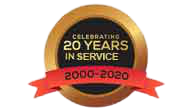Patent Licensing: A Guide For Licensor's Point of View
What is Patent Licensing?
Licensing is a procedure through which the inventor gives authorization to a
manufacturing entity (be it a company or an individual) permitting them to
extract the benefit out of the licensed product.[1] In other words, it is by
licensing that a patent holder grants permission to an individual or an
organization to make use of his patented invention in exchange for royalties.
Questions to Ask Oneself Before A Licensor Decides to License His Patent
Since it is assumed by many, that producing goods by making use of one's own
invention will prove to be more profitable to an inventor in comparison to
licensing it[2], hence one important question that a patentee needs to ask
himself before licensing his patent, is, whether he has enough capital to
involve himself in the business of production? Because it is important for a
licensor to know that licensingis often opted by those inventors, who do not have
enough capital to manufacture their invention at an individual level.[3]Though
royalties arriving in exchange for a licence are negotiable, the licensors might
be paid lesser than manufacturing costs incurred by licensees.
Hence a patentee should ask himself whether licensing will earnhim deserving royalty payment?
Other crucial questions include as to what commercial role does his invention
fulfill, like, is it an invention that improves products already existing in the
market, or is it completely novel? It is also vital to ask, if one would be
willing to work with several partners (non-exclusive licensing) or not
(exclusive licensing or rights transfer). Once these questions are answered, a
licensor would have a comprehensible framework and can go ahead with further
steps.
Different Types Of Patent Licenses
There are eight types of patent licenses:
Exclusive License:
Exclusive patent license agreements propose the most
protection to licensees but also come with the most accountability and
expectations. An exclusive patent license is an agreement among the licensor and
the licensee stating that the licensor will not practice under the patent
himself or grant other exclusive licenses to other parties. [4]
Non-exclusive License:
n this contract, the licensor agrees to give some
specific rights to the licensee but also reserves the right to grant licenses of
the invention and rights concerned to third parties or use it themselves.[5]
Sub Licenses:
It is a category of license issued by the licensee to various
organizations to make the products. Sublicense is a procedure of granting of
certain licensed rights on a product to a third party by the licensee.[6]
Cross Licensing:
A cross-licensing agreement is a contractual arrangement between
two or more parties (company or an individual) in which every party is granted
rights to piece of technology, invention, research, or other subject matter.
Cross-licenses usually take place between companies that hold patents over
various aspects of the same invention. By entering into an agreement, each
company involved can avoid litigation over infringement matters.[7]
Compulsory License:
In straightforward terms, compulsory licenses are
authorizations granted to a third-party by the Government to formulate, use or
sell a particular product or use a particular process which has been patented,
without the requirement of the consent of the patent owner. Under Indian Patents
Act, 1970 the provisions of ‘compulsory license' are explicitly given under
Chapter XVI, and the terms and conditions that need to be fulfilled are given is
Sections 84-92 of the said Act.[8]
Voluntary Licensing:
Also applicable for pharmaceutical patents, voluntary
licenses are an act of goodwill towards the world. Patent holders may at their
prudence, license to other parties, on an exclusive or nonexclusive basis, the
right to manufacture, import, and/or dispense a pharmaceutical product. Based on
the terms of the licence, the licensee may act completely or efficiently as an
agent of the patent holder; or the licensee may be free to set the requisites of
sale and distribution within a prescribed market or markets, contingent on
expense of a royalty.[9]
Carrot License:
This licensing approach is apt when the potential licensee is not
in practice of the patented invention and does not fall under any compulsion to
take a license. This type of licenses is a marketing strategy where the patent
owner gives the licensee a glance of what could be achieved by acquiring a
license for their patent.[10]
Stick Licensing-Stick licensing is the absolute contrast of carrot licensing.
This tactic of licensing can be utilized when the prospective licensee is
already in use of your patented technology and, thereby, infringing your
patent.[11]
How one should go about patent Licensing:
- Locate manufacturers: In order to find a potential Licensee, a licensor should conduct research and identify manufacturers who operate under relatively similar technology[12] and should make sure that he licenses out his patented product to a manufacturer, who not just incentivizes on improvising but also on innovating the technology of products that he manufactures.
- Negotiating with the potential manufacturers: According to WIPO, it is important that the rate results in good business proportion for both parties, and so negotiation of the royalty rate is fundamental to the success of the agreement.[13]
- Due Diligence: Before initiating any kind of negotiations with the
Producers, the licensor should investigate and exercise reasonable care in
gathering information about the producers' history in business and their goals
and objectives towards marketing, because it helps them realize their common
goals. Since significance of information relies upon different factors and
varies with varying circumstances, it becomes highly impossible to suggest a
specific information as important information, for a licensor to prioritize
while exercising due diligence.
- Convincing the manufacturer to license to the patent product:
While presenting his invention to the manufacturer, the licensor should
incorporate the Pain Points strategy and point out at the technical
glitches and the drawbacks of the current products in the market and explain
on how his invention is superior, by focusing on how it fixes those
issues[14].This way of presenting one's patent will make the potential
licensee realize the value of the licensor's invention.
- Getting the manufacture to sign the confidentiality agreement:
Sometimes it so happens that, in order to get the manufacture license to the
patented product, the licensorsdisclose sensitive information about their
invention to the manufacturers, and since all negotiations do not necessarily
wind up into a successful license agreement, there is always a good amount of
chance for the disclosed information to get misappropriated by manufacturers.
Hence in order to safeguard their patent from getting infringed, the licensors
should enter into a Non- disclosure agreement also known as confidentiality
agreement with the manufacturers.
- Essential elements that are to be mentioned in the License agreement:
Once the search initiated to find a potential licensee for the patent is
over, the next step would be to enter into an agreement with clauses that
stipulates each and every obligation to be performed by the licensor and the
licensee. Clause considered essential in a patent licensing agreement
includes the time period for which the license is granted, the compensation that is to be paid for
making use of the patented product, which can be either in lump sum or royalties,
a clause on whether a licensee can sublicense to other manufacturers andmake
changes to the patent product should be included because it aids the licensor to
prevent his invention from being exploited.
Advantages of Patent Licensing
- Licensing out cuts off the licensor from bearing the production costs, supply costs, delivery costs and sales cost by transferring the risk to the licensee[15]
- Finding a potential licensee who is successful and stable in his business, will aid the licensor in swiftly moving his products into the marketplace including foreign markets.[16]
- Licensing out helps in bringing the products to the market that the public is in dire need of, hence a patentee should license out his invention rather than preserving it.[17]
- By licensing out his patent, the licensor in addition to retaining his title over the patent can earn huge income.
- Since there is always a scope for the licensor to license out his patent to multiple licensees, he can earn huge incomes from multiple sources at the same time.
Disadvantages of Patent Licensing
- Though the licensor retains his legal title after licensing out, it
deprives him from having enough control over the patented product.[18]
- A novice licensor not familiar with licensing activities often end up
granting licenses to an incompetent licensee, who becomes a cause for the
failure of the invention.
- In the process of licensing out, increased exposure can result in theft
and misuse of the patent costing the licensor to lose his ownership over the
invention.
- Manufacturing is the process that transforms an idea into product and
hence poor commercializing skills and manufacturing skills of the licensee
might result in the failure of the patent holder's invention. Therefore
success of the licensor's patent is highly dependent upon the skills and
efforts put in by the manufacturer.[19]
- The licensor should excessively investigate about the reputation that manufacturer holds for his production, because manufacturer's inferior reputational remarks might hinder the licensor from succeeding in the market.
Conclusion
Licensing of Patents can turn out to be a huge benefit for both the licensor and
the licensee as it will earn them huge returns on the investments made by them
on the technology. No matter how much one spends on inventing or marketing it,
if it is not good enough to fulfil a consumer's requirements, then it won't be
good enough to earn royalties or profits to the inventor and manufacturer
respectively.
Also, licensing of patents should be encouraged because, it acts as a boon for
the public at large, because a person's invention might be beneficial for the
society like machinery equipment which reduces the burden of peopleby using them
in their daily life, and sometimes it might be an essential requirement for the
public like medicines.Hence patent licensing should be encouraged by providing
necessary aid and protection to the patentee in the process of licensing his
patent.
End-Notes:
- https://www.wipo.int/patents/en/faq_patents.html
- https://www.greyb.com/patent-licensing-101/
- https://www.klinckllc.com/patents/6-questions-to-ask/
- https://patent.laws.com/patent-protection/exclusive-licensing
- https://www.priorilegal.com/intellectual-property/intellectual-property-assignment-agreements-and-licenses
- https://www.mondaq.com/india/Intellectual-Property/805902/Patent-Licensing
- https://www.gapslegal.com/articles/what-is-a-cross-licensing-agreement/
- https://blog.ipleaders.in/concept-compulsory-license-patents-act-1970/
- https://apps.who.int/medicinedocs/en/d/Js4907e/3.5.html
- https://www.technologyreview.com/s/403932/what-you-need-to-know-about-patents-and-their-value/
- ibid
- https://www.greyb.com/patent-licensing-101/
- WIPO (2005,P.57).
- https://www.heerlaw.com/patent-licensing-steps-strategies
- https://www.iiprd.com/all-you-need-to-know-about-patent-licensing/
- https://www.tcii.co.uk/2012/10/26/licensing-arrangements-the-pros-and-cons/
- https://www.mondaq.com/india/Intellectual-Property/767148/Patent-Licensing
- https://www.iiprd.com/all-you-need-to-know-about-patent-licensing/
- https://www.greyb.com/patent-licensing-101/
Written By:
- Kavya B - Gujarat National Law University
Email id: [email protected] - Aditi Jaiswal - Gujarat National Law University
Email id: [email protected]
Law Article in India
Lawyers in India - Search By City
Popular Articles
How To File For Mutual Divorce In Delhi
How To File For Mutual Divorce In Delhi Mutual Consent Divorce is the Simplest Way to Obtain a D...
Increased Age For Girls Marriage
It is hoped that the Prohibition of Child Marriage (Amendment) Bill, 2021, which intends to inc...
Facade of Social Media
One may very easily get absorbed in the lives of others as one scrolls through a Facebook news ...
Section 482 CrPc - Quashing Of FIR: Guid...
The Inherent power under Section 482 in The Code Of Criminal Procedure, 1973 (37th Chapter of t...

Home | Lawyers | Events | Editorial Team | Privacy Policy | Terms of Use | Law Books | RSS Feeds | Contact Us
Legal Service India.com is Copyrighted under the Registrar of Copyright Act (Govt of India) © 2000-2025
ISBN No: 978-81-928510-0-6


Please Drop Your Comments